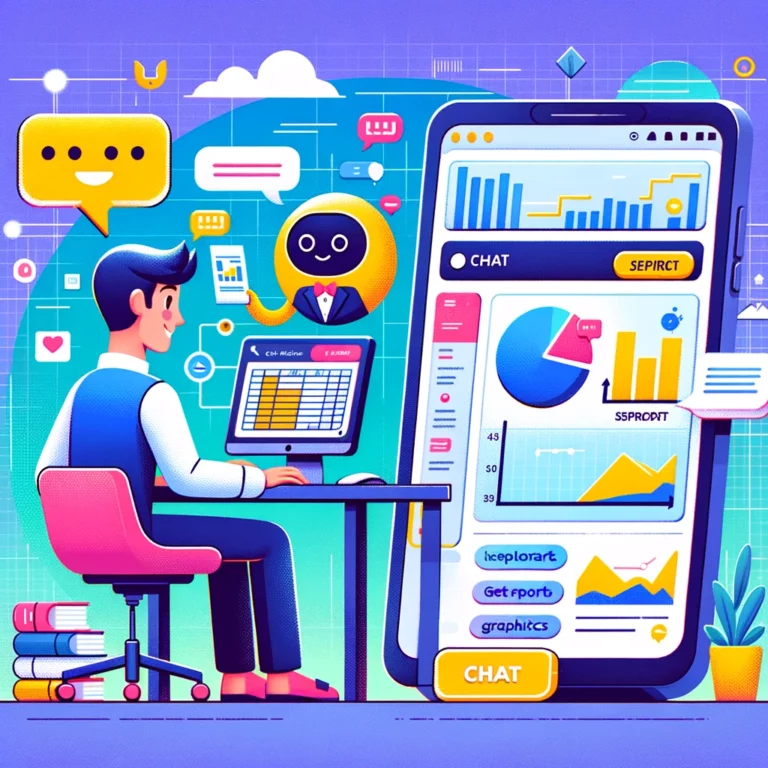The advent of AI-powered language models like ChatGPT has opened up new possibilities for businesses, particularly small and medium-sized enterprises (SMBs), to improve their operations and gain a competitive edge. However, with these opportunities come potential threats, challenges, and disruptions. In this short article, we will explore the various ways SMBs can leverage ChatGPT and discuss the issues they need to address to ensure a successful implementation.
Expanding Customer Service Capabilities with ChatGPT
ChatGPT has the potential to revolutionize customer service for SMBs, providing numerous benefits and opportunities for improvement. By leveraging AI-powered chatbots, businesses can streamline their customer service processes, increase efficiency, and ultimately boost customer satisfaction. In this section, we will explore the various aspects of implementing ChatGPT in customer service, including associated costs and requirements.
Benefits of ChatGPT in Customer Service
Quick and Accurate Responses: ChatGPT can analyze and understand customer inquiries, providing relevant and accurate information in real-time. This rapid response time can significantly improve the customer experience and foster a positive brand image.
Reduced Wait Times: By automating routine customer service tasks, chatbots powered by ChatGPT can help reduce wait times for customers seeking assistance. This increased efficiency allows businesses to address customer concerns promptly and effectively.
Improved Overall Customer Satisfaction: With quick, accurate responses and reduced wait times, customer satisfaction levels are likely to rise. Satisfied customers are more likely to remain loyal and recommend the business to others, driving growth and success.
Freeing Up Resources: By automating routine tasks, businesses can allocate their human resources to more complex and personalized customer interactions, resulting in a more well-rounded customer service approach.
Costs Associated with Implementing ChatGPT
Licensing Fees: To use ChatGPT for commercial purposes, businesses need to subscribe to an appropriate plan. These plans vary in cost depending on usage requirements, but generally involve a monthly or annual subscription fee.
Chatbot Development: Implementing ChatGPT in a chatbot requires technical expertise and development resources. SMBs may need to hire developers or work with a third-party service provider to create a custom chatbot tailored to their specific needs. This can involve both upfront and ongoing maintenance costs.
Training and Customization: While ChatGPT is a powerful AI model, it may require training and customization to optimize its performance for specific industries or customer service scenarios. This can include investing time and resources in refining the chatbot’s understanding of domain-specific terminology and tailoring its responses to suit the target audience.
Integration with Existing Systems: Integrating a ChatGPT-powered chatbot with existing customer service platforms or tools may require additional effort and resources. This may include custom development work, API integration, or the purchase of additional software or services.
Requirements for Implementing ChatGPT
Technical Expertise: To effectively implement and manage a ChatGPT-powered chatbot, businesses need access to skilled developers or IT professionals who understand AI technologies and can oversee the development, customization, and integration processes.
Data Management: Businesses must ensure that data privacy and security are maintained when using ChatGPT. This includes developing and implementing policies and procedures to protect customer information and comply with relevant data protection regulations.
Employee Training: To maximize the benefits of a ChatGPT-powered chatbot, employees should be trained on how to use the technology and integrate it into their customer service workflows. This may involve developing training materials, conducting workshops, or providing ongoing support as employees adapt to the new technology.
Boosting Internal Communication and Collaboration with ChatGPT
ChatGPT can significantly enhance internal communication and collaboration within SMBs, leading to a more efficient and productive work environment. By adopting AI-powered tools, businesses can streamline various processes, improve team coordination, and ultimately drive growth. In this section, we will discuss the potential applications of ChatGPT in internal communication and collaboration, along with the associated costs and requirements.
Benefits of ChatGPT in Internal Communication and Collaboration
Streamlined Collaboration: ChatGPT-powered tools can facilitate seamless communication among team members, helping them to share information, exchange ideas, and coordinate tasks more effectively.
Automated Meeting Scheduling: ChatGPT can be used to develop smart scheduling assistants that automate meeting planning by finding mutually available time slots, sending calendar invites, and even generating agendas.
Drafting and Summarizing Documents: With its natural language processing capabilities, ChatGPT can assist in drafting and summarizing documents, saving time and ensuring consistent messaging across the organization.
Context-Aware Suggestions: ChatGPT can provide real-time, context-aware suggestions during brainstorming sessions or team discussions, helping to spark new ideas and drive innovation.
Costs Associated with Implementing ChatGPT for Internal Communication and Collaboration
Licensing Fees: Similar to customer service applications, businesses need to subscribe to a ChatGPT plan for commercial use. The cost will depend on the chosen plan and usage requirements.
Tool Development: Implementing ChatGPT-powered tools for internal communication and collaboration may require custom development. Businesses may need to hire developers or collaborate with a third-party service provider, resulting in upfront and ongoing costs.
Integration and Compatibility: Integrating ChatGPT-powered tools with existing communication platforms or software may involve additional effort and resources, such as API integration or custom development.
Employee Training: As with any new technology, employees will need training and support to effectively use ChatGPT-powered tools. This may include developing training materials, conducting workshops, or providing ongoing assistance.
Requirements for Implementing ChatGPT in Internal Communication and Collaboration
Technical Expertise: Developing and managing ChatGPT-powered tools requires access to skilled developers or IT professionals with a strong understanding of AI technologies.
Data Management: Businesses must ensure data privacy and security when using ChatGPT for internal communication. This includes developing policies and procedures to safeguard sensitive information and comply with relevant data protection regulations.
Change Management: Introducing ChatGPT-powered tools may result in significant changes to existing workflows and processes. Businesses should develop a change management plan to help employees adapt to the new technology, including training, support, and regular progress evaluations.
Leveraging ChatGPT for Content Creation and Marketing: Costs and Requirements
In the digital age, content creation plays a crucial role in driving brand awareness and customer engagement. ChatGPT can be a valuable tool for SMBs looking to generate content for various channels while saving time and resources. In this section, we will discuss the potential applications of ChatGPT in content creation and marketing, along with the associated costs and requirements.
Benefits of ChatGPT in Content Creation and Marketing
Time and Resource Savings: Using ChatGPT for content generation can significantly reduce the time and effort spent on crafting blog posts, social media updates, email campaigns, and product descriptions, freeing up valuable resources for other tasks.
Consistent and Engaging Content: ChatGPT can help businesses maintain a consistent voice and tone across their content, ensuring that their messaging resonates with their target audience.
Content Personalization: AI-powered tools like ChatGPT can enable businesses to create personalized content tailored to individual customer preferences and needs, resulting in more engaging and effective marketing campaigns.
Costs Associated with Implementing ChatGPT for Content Creation and Marketing
Licensing Fees: To use ChatGPT for commercial content creation and marketing purposes, businesses must subscribe to a plan that fits their usage requirements. The cost will depend on the chosen plan and the level of usage.
Tool Development: Developing custom applications that leverage ChatGPT for content creation may require hiring developers or collaborating with a third-party service provider. This can lead to upfront and ongoing costs.
Content Management and Editing: While ChatGPT can generate content quickly, it is essential to have human oversight to ensure quality, relevance, and brand alignment. Businesses should allocate resources for content review and editing.
Training and Support: As with any new technology, employees involved in content creation and marketing may require training and support to effectively use ChatGPT-powered tools.
Requirements for Implementing ChatGPT in Content Creation and Marketing
Technical Expertise: Access to skilled developers or IT professionals with a strong understanding of AI technologies is necessary for the development and management of ChatGPT-powered content creation tools.
Content Strategy: To effectively leverage ChatGPT for content creation and marketing, businesses should develop a comprehensive content strategy that outlines their goals, target audience, and key performance indicators (KPIs).
Data Privacy and Security: When using ChatGPT for content generation, businesses must ensure data privacy and security by following relevant data protection regulations and implementing best practices for data management.
Quality Assurance and Brand Alignment: Human oversight is critical for maintaining quality and brand alignment in AI-generated content. Businesses should allocate resources for content review and editing to ensure that the final output aligns with their brand and messaging.
Threats and Challenges
While the benefits of ChatGPT are undeniable, businesses need to be aware of potential threats and challenges:
a. Data Privacy Concerns: It is essential to ensure that sensitive data is not inadvertently shared or exposed when using AI-powered tools like ChatGPT. SMBs must be vigilant about data protection and adhere to relevant regulations to safeguard their customers’ and employees’ information.
b. Overreliance on AI: AI can be highly efficient, but it’s important not to rely solely on it for all business processes. Maintaining a balance between human expertise and AI-generated insights is crucial to avoid potential pitfalls and ensure that technology serves as a support rather than a replacement for human intelligence.
c. Ethical Considerations: SMBs must be aware of potential biases and ethical concerns associated with AI technology. Ensuring that AI-powered tools like ChatGPT are transparent, fair, and accountable is essential to maintain trust and integrity in their operations.
Disruptions and Change Management
Integrating AI-powered tools like ChatGPT into a business’s processes and workforce dynamics can bring about significant disruptions and changes. To ensure a smooth transition, it is crucial for SMBs to prioritize change management and support their employees throughout the process. Here are some key aspects to consider:
- Clear communication: Clearly communicate the reasons for adopting ChatGPT, its benefits, and how it will affect current processes and roles. Encourage open discussions and address any concerns or questions employees may have.
- Training and support: Offer comprehensive training and support resources to help employees understand and effectively utilize ChatGPT in their daily tasks. This can include tutorials, webinars, or even one-on-one coaching sessions.
- Monitor and adjust: Regularly evaluate the impact of ChatGPT on your business processes and employee performance. Use feedback from employees to make any necessary adjustments and continuously improve the integration of the technology.
- Encourage a growth mindset: Cultivate a culture that values learning and embraces innovation. Encourage employees to see the adoption of ChatGPT as an opportunity to develop new skills and grow professionally.
Maximizing ChatGPT Benefits for SMBs with a Regular Subscription and No Specialized Resources
The best way for SMBs to take advantage of ChatGPT with a regular subscription and without hiring specialized resources is by integrating it into their existing workflows and using readily available tools. Here are some practical steps to get started:
Use pre-built solutions: Look for existing platforms or tools that have integrated ChatGPT into their services. These can include chatbot builders, content generation tools, or social media management platforms. By using these pre-built solutions, you can leverage the power of ChatGPT without needing specialized expertise or custom development.
Focus on specific use cases: Identify areas in your business where ChatGPT can have the most significant impact, such as customer service, content creation, or internal communication. Start by incorporating ChatGPT into one or two key use cases to gauge its effectiveness and ensure a smooth transition.
Train your team: Educate your employees on how to use the available ChatGPT tools effectively and safely. Encourage them to explore the platform’s features and experiment with different use cases to get the most out of their subscription.
Set up guidelines and best practices: Develop guidelines for using ChatGPT in your organization, including ethical considerations, data privacy, and quality control. Establish clear expectations and processes for team members to follow when using the AI-generated content.
Monitor and evaluate performance: Track the effectiveness of ChatGPT-powered tools and processes, and gather feedback from your team members. Use this information to make adjustments and improvements as needed, ensuring that your investment in ChatGPT continues to yield positive results.
By using readily available ChatGPT-powered tools, focusing on specific use cases, and providing the necessary training and guidelines to your team, SMBs can harness the potential of ChatGPT without hiring specialized resources. This approach enables businesses to improve customer service, enhance content creation, and streamline internal communication, ultimately driving growth and success.
Conclusion
ChatGPT offers SMBs a wealth of opportunities to enhance their customer service, internal communication, and content creation efforts. However, to maximize these benefits, businesses must also be prepared to address the potential threats, challenges, and disruptions that come with AI implementation. By navigating these complexities with care and foresight, SMBs can harness the power of ChatGPT to boost their business and stay ahead of the competition.



